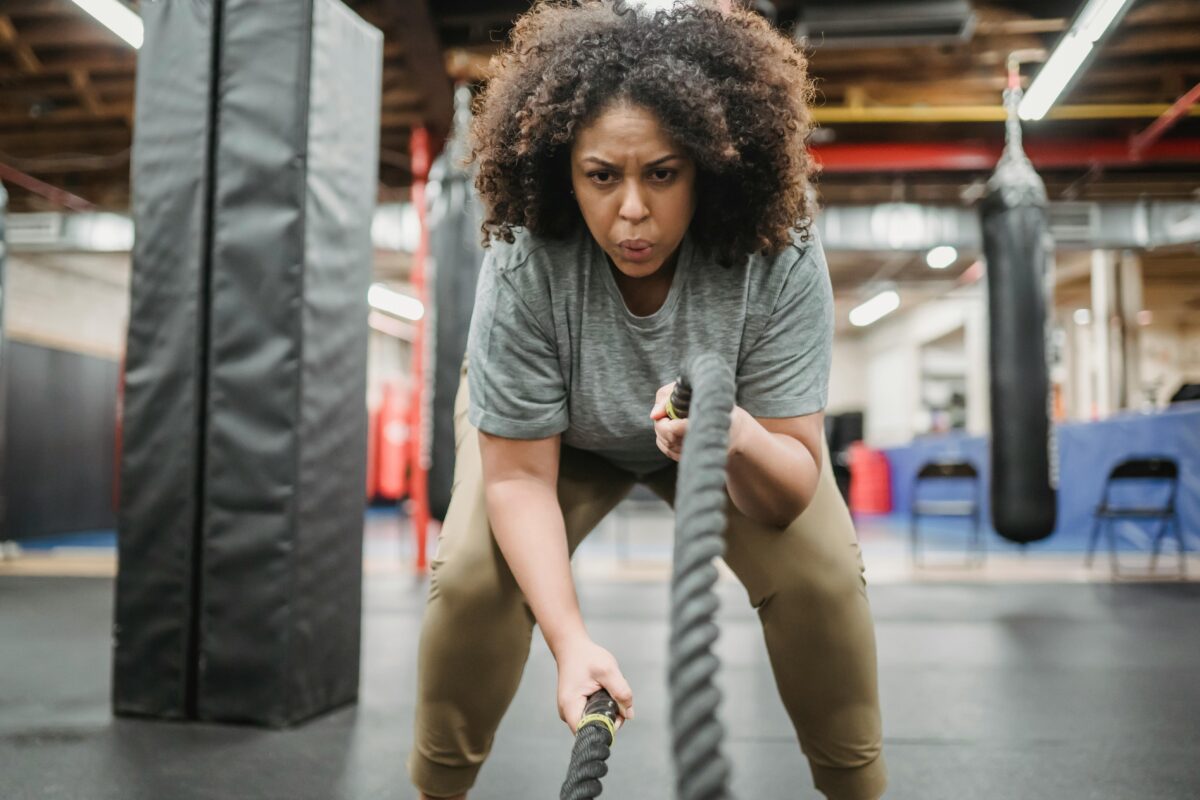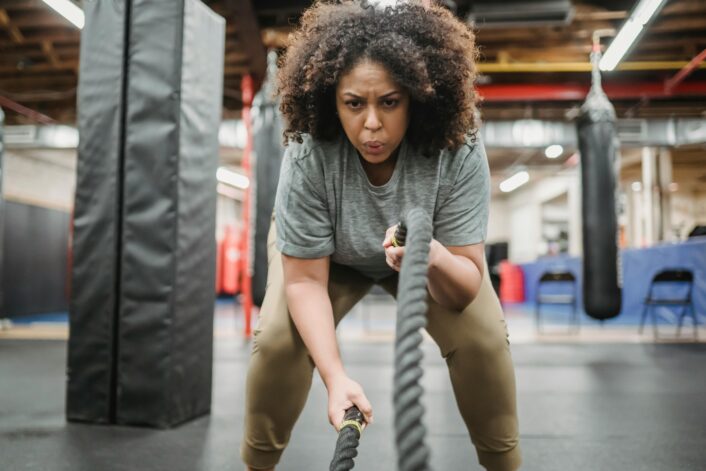What Does Genetics Tell About Your Aerobic Capacity
Aira
on
January 19, 2024

Latest Posts
Table of Contents
What Does Genetics Tell About Your Aerobic Capacity
Date of Content: December 16, 2023
Written by: Harvey Talento
Reviewed by: Maarit Tiirikainen, PhD
Introduction
Aerobic capacity, a crucial aspect of physical fitness, is measured by the VO2 Max, indicating the maximum amount of oxygen the body can utilize during intense exercise. This metric serves as a fundamental determinant of one’s aerobic capabilities.
As physical exertion increases, so does the oxygen demand. The VO2 Max represents the point at which the body reaches its maximum capacity for oxygen consumption, influencing an individual’s aerobic performance. Those with lower aerobic capacity may experience a heightened sense of breathlessness during exercise.
For individuals with compromised lung function, a greater portion of their “breathing reserve” is utilized during physical activity. This reserve reflects the maximum air capacity of the lungs relative to the typical amount used during rest. Understanding the correlation between aerobic capacity and respiratory function highlights the significance of optimizing these factors.
Engaging in aerobic training becomes a practical approach to enhance endurance and alleviate breathlessness by improving aerobic capacity. This exploration aims to dissect the functional aspects of oxygen utilization about physical performance, providing insights into the mechanisms behind a more resilient and efficient body.

Why is Having High Aerobic Capacity Important
Having a high aerobic capacity holds significant implications for overall health and physical performance. A robust aerobic capacity is indicative of the efficiency with which the cardiovascular and respiratory systems collaborate, delivering oxygen to working muscles during exercise.
Improved Endurance
High aerobic capacity enables individuals to sustain physical activity for longer durations without experiencing fatigue. This increased endurance is valuable not only for athletes but also for individuals engaging in everyday activities.
Enhanced Cardiovascular Wellness
A strong correlation exists between aerobic capacity and cardiovascular health. Regular aerobic exercise contributes to the optimal functioning of the heart, reducing the risk of cardiovascular diseases such as hypertension and coronary artery disease.
Weight Management
Aerobic exercise plays a pivotal role in weight management by promoting calorie expenditure. Individuals with higher aerobic capacities tend to burn more calories during both exercise and rest, contributing to weight maintenance or loss.
Reduced Breathlessness
Individuals with high aerobic capacities experience less breathlessness during physical activity. This is attributed to the body’s ability to supply sufficient oxygen to meet the demands of the muscles, minimizing the feeling of being “out of breath.”
In conclusion, cultivating a high aerobic capacity is a multifaceted investment in overall well-being. Prioritizing activities that elevate aerobic capacity can lead to a more resilient lifestyle.
Genetics of Aerobic Capacity
Understanding the genetic underpinnings of aerobic capacity sheds light on the individual variations observed in the response to aerobic training. Here are some examples of the role of genetic variants in aerobic capacity:
PPARGC1A
A 2014 study suggests that a specific gene called PPARGC1A, with a particular variation known as rs8192678 C>T (Gly482Ser), can impact how well individuals respond to aerobic exercise. The study focused on how this genetic variation influences aerobic capacity, which is essentially the body’s ability to use oxygen during physical activity.
The findings indicate that individuals with different variations of this gene may have varying responses to a 10-week cycling training program. Those with the wild type (CC) tended to show the most improvement in aerobic capacity compared to those with the homozygous (TT) or heterozygous (CT) variations of the gene.
In other words, the genetic makeup of an individual, specifically in the PPARGC1A gene, might play a role in determining how effectively they can enhance their aerobic capacity through exercise. This insight highlights the potential influence of genetics on an individual’s ability to benefit from aerobic training.
ADRB2 Gly16Arg
A 2007 study suggests that a specific genetic variation known as Gly16Arg (rs1042713 G>A) in the β2-adrenoceptor gene (ADRB2) may influence aerobic capacity, especially in the context of endurance performance. The research involved comparing the genetic makeup of elite endurance athletes with sedentary individuals.
The findings indicate that individuals with the wild-type allele of the rs1042713 polymorphism may have a less favorable impact on their aerobic performance. In other words, possessing the G-allele seems to be associated with lower endurance capabilities, as observed in sedentary individuals with a lower maximum oxygen uptake (VO2 max).
The study suggests a potential link between this genetic variation and an individual’s ability to perform well in endurance activities, shedding light on the role of genetics in influencing aerobic capacity.
VEGF
A 2008 study explored the frequency distribution of the vascular endothelial growth factor gene (VEGF; G634C polymorphism, rs 2010963) alleles in athletes and a control group. The study identified associations between the VEGF rs2010963 C- allele and high aerobic performance, maximal power, maximal oxygen consumption, and a significant contribution to energy supply in aerobic metabolism (maximal lactate content).
Non-Genetic Factors Influencing Aerobic Capacity
While genetic factors play a role in determining an individual’s aerobic capacity, non-genetic factors also significantly contribute to these variations. Understanding the influence of non-genetic factors is essential for tailoring exercise programs and optimizing aerobic performance.
Age
Age is a significant non-genetic determinant of aerobic capacity, with VO2 max experiencing a gradual decline after the age of 25. The aging process brings about physiological changes, including reductions in cardiac output, muscle mass, and overall aerobic efficiency. Understanding the impact of age on aerobic capacity is crucial for developing age-appropriate exercise interventions.
Body Size
Individuals with larger body sizes and greater musculature tend to display higher aerobic capacities. The positive correlation between body size and VO2 max reflects the increased oxygen demand associated with supporting larger bodies and muscles. This correlation elucidates the connection between body size, musculature, and variations in aerobic performance.
Fitness Levels
The level of physical fitness plays a pivotal role in determining aerobic capacity. Regular exercise and physical activity contribute to improved cardiovascular function, enhanced oxygen utilization, and increased mitochondrial density. A fit individual is likely to have a higher VO2 max compared to a sedentary counterpart of the same age and sex, emphasizing the dynamic nature of fitness levels in influencing aerobic performance.
Sex
Sexual dimorphism introduces notable differences in aerobic capacity, with men typically exhibiting higher VO2 max values than women. This is attributed to physiological distinctions such as larger hearts, higher hemoglobin levels, and lower body fat percentages in men. The combination of these factors enhances oxygen delivery to muscles and contributes to the observed disparities in aerobic capacity between sexes.
By addressing these non-genetic factors, individuals can optimize their aerobic performance, promote cardiovascular wellness, and enhance overall well-being.
How To Improve Aerobic Capacity
A key aspect of enhancing aerobic capacity involves adopting a holistic approach that encompasses lifestyle modifications, breathing techniques, and strategic exercise routines. Here are some effective strategies to improve your aerobic capacity:
Diaphragmatic Breathing
Practice diaphragmatic breathing to optimize lung health, a crucial component in improving aerobic capacity. Inhale slowly through your nose, expanding the ribs and upper chest. Hold the breath for 2 seconds and then exhale completely, allowing the chest to fall, contracting the ribs, and lifting the diaphragm. Regular diaphragmatic breathing enhances respiratory efficiency, contributing to improved oxygen uptake during physical exertion.
Regular Exercise Routine
Incorporate a well-rounded exercise routine that combines both aerobic (cardiovascular) and anaerobic (resistance) training. Aim to meet or exceed the American Heart Association’s recommendation of at least 30 minutes of moderate-intensity exercise each day. This dual approach enhances overall fitness, promoting cardiovascular health and muscular endurance.
High-Intensity Interval Training (HIIT)
Prioritize high-intensity interval training (HIIT) over steady-state aerobic workouts. HIIT involves short bursts of intense exercise followed by brief recovery periods. Initiate your HIIT training with short 10-minute sessions, consisting of 30 seconds of high-intensity work and a 30-second recovery for five rounds. This approach is effective in boosting aerobic capacity, increasing metabolic efficiency, and promoting overall cardiovascular health.
Hydration
Maintaining optimal hydration levels is a fundamental aspect of lung health and overall aerobic performance. Water plays a crucial role in keeping the mucosal lining of the lungs thin, improving respiratory efficiency. Sip water consistently from your bottle during workouts, and aim to consume at least half a gallon of water throughout the day. Adequate hydration supports oxygen transport and utilization during exercise.
Nutrient-Rich Diet
Include foods in your diet that specifically support heart and lung health. Incorporate fatty fish rich in omega-3 fatty acids, which contribute to cardiovascular well-being. Consume apples, known for their phytochemical content that aids respiratory health. Additionally, include tomatoes in your diet as a source of antioxidants, which combat oxidative stress and support overall cardiovascular function.
By integrating these practices into your lifestyle, you can systematically enhance your aerobic capacity, leading to improved endurance, better cardiovascular health, and an overall boost in physical well-being.
About the LifeDNA Fitness Report
Uncover whether your genes predispose you to enhanced or potentially limited aerobic capacity and receive personalized tips crafted to tailor your fitness routine accordingly. The LifeDNA Fitness Report is not just a document; it’s your exclusive guidebook to optimizing your cardiovascular potential and achieving peak performance.
Start your personalized fitness adventure with LifeDNA by getting your Fitness Report today!
Summary
- Aerobic capacity, measured by VO2 Max, is a critical aspect of physical fitness, representing the body’s maximum oxygen utilization during intense exercise.
- High aerobic capacity signifies efficient collaboration between the cardiovascular and respiratory systems, leading to improved endurance, cardiovascular health, weight management, and reduced breathlessness during physical activity.
- Exploration of genetic factors, including certain genotypes in genes PPARGC1A, ADRB2, and VEGF, reveal their influence on aerobic capacity.
- Age-related decline in VO2 max, the positive correlation between body size and aerobic capacity, the impact of fitness levels, and sexual dimorphism are known non-genetic factors influencing aerobic capacity. Understanding these factors is crucial for tailoring exercise interventions.
- Effective strategies for enhancing aerobic capacity include diaphragmatic breathing for lung health, a well-rounded exercise routine combining aerobic and anaerobic training, prioritizing high-intensity interval training (HIIT), maintaining optimal hydration, and incorporating a nutrient-rich diet.
- Cultivating high aerobic capacity is presented as a holistic investment in overall well-being.
References
- https://www.sciencedirect.com/science/article/abs/pii/B9781416031970100692
- https://www.tandfonline.com/doi/full/10.3109/08037051.2013.778003
- https://www.researchgate.net/publication/262452051_Does_Genetic_Variation_in_PPARGC1A_Affect_Exercise-Induced_Changes_in_Ventilatory_Thresholds_and_Metabolic_Syndrome
- https://www.metabolismjournal.com/article/S0026-0495(07)00268-5/fulltext
- https://link.springer.com/article/10.1134/S0362119708040129
- https://www.ncbi.nlm.nih.gov/pmc/articles/PMC4968829/
Customer Reviews




*Understanding your genetics can offer valuable insights into your well-being, but it is not deterministic. Your traits can be influenced by the complex interplay involving nature, lifestyle, family history, and others.
Our reports have not been evaluated by the Food and Drug Administration. The contents on our website and our reports are for informational purposes only, and are not intended to diagnose any medical condition, replace the advice of a healthcare professional, or provide any medical advice, diagnosis, or treatment. Consult with a healthcare professional before making any major lifestyle changes or if you have any other concerns about your results. The testimonials featured may have used more than one LifeDNA or LifeDNA vendors’ product or reports.
- Category: Fitness



